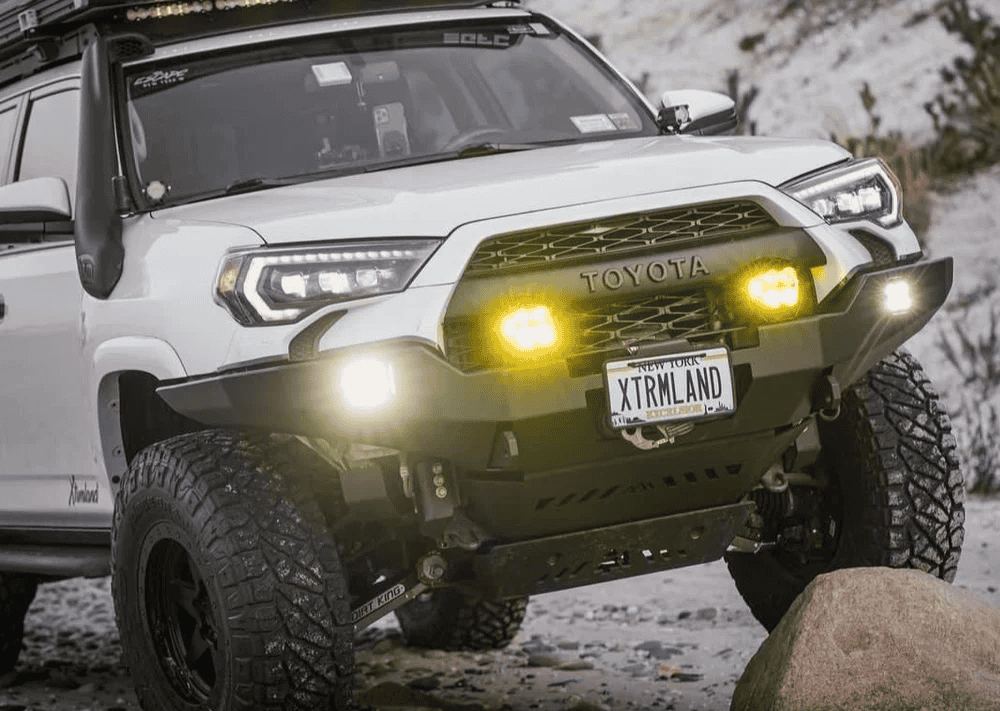Overland Vehicles

A reliable custom overland conversion quote starts with scope. Define how you travel, how many people ride and sleep, and the conditions you will face. Daily trail use calls for different systems than long highway stretches with occasional forest roads. Clarity at the start reduces revisions later.
Your platform sets the baseline. Payload ratings, wheelbase, roof height, and factory electrical architecture all influence design choices. Four wheel drive or rear wheel drive, gear ratios, and tire diameter affect suspension selection, braking, and clearance plans. If the vehicle has prior mods, shops will inspect for corrosion, wiring quality, and structural integrity before pricing.
System choices carry major cost weight. Electrical power capacity hinges on battery chemistry, usable kilowatt hours, inverter size, alternator charging, and solar input. Climate control covers ventilation, insulation type, window count, and heating or cooling strategy. Water planning considers tank size, filtration, hot water, and winterization. Interior build materials, from aluminum framing to marine grade plywood and composite panels, swing price through both parts and fabrication time.
Labor drives much of the budget. Custom cabinetry, curved surfaces, hidden fasteners, and serviceable access panels take time to engineer and assemble. Precision wiring, fusing, and shunt based monitoring add hours but pay off in safety and reliability. Expect computer aided design work for layouts, brackets, and mount points, then machining and finishing that match those drawings.
Safety and compliance matter. Good shops quote for proper load distribution, secure anchoring, and thoughtful crash load paths. They also account for fire suppression options, battery containment, and ventilation requirements. Each of these line items adds cost yet protects passengers and the investment.
Build a simple brief that lists must haves, nice to haves, and future add ons. Include power targets in watt hours per day, fridge dimensions, bed size, bike or moto storage, and recovery goals. Add photos of the van interior, undercarriage, and any aftermarket parts. The more specific the scope, the cleaner the quote.
Industry quotes typically roll up parts, labor, and incidentals. Parts include core systems like batteries, inverters, heaters, roof racks, suspension, tires, and recovery gear. Labor covers tear down, prep, fabrication, wiring, plumbing, cabinetry, and testing. Incidentals capture consumables, coatings, hardware, shipping, and shop supplies.
Ballpark ranges vary widely with scope. A focused partial upfit for storage, basic power, and lighting might land in the lower bracket. A balanced adventure build with solid electrical, heat, water, and interior finishes often sits in the middle tier. Complex expedition level rigs with high capacity power, climate control, full water systems, custom fabrication, and heavy suspension live at the top end. Timelines typically align with complexity, from several weeks to multiple months.
Ask for clarity on shop rates and estimated hours per trade. Cabinetry, upholstery, metalwork, and electrical often have different labor estimates. Good quotes show assumptions for design time, revisions, and expected lead times for long pole parts like heaters, windows, or specialty batteries.
A few choices move the needle most. High capacity lithium power with large inverters and fast charging adds both parts and integration hours. Air conditioning demands careful power planning. Hydronic heat with hot water drives plumbing complexity. Custom roof racks, bumpers, and underbody protection increase fabrication time. Each decision should map to your actual travel patterns, not just wishful thinking.
Start with a clean request. Share the vehicle year, model, drivetrain, current mileage, and any accident history. Include a use profile with climate zones, trip duration, and average days off grid. Provide a layout sketch with dimensions, weight targets, and service access preferences. Add a prioritized list and a budget range for alignment.
When quotes arrive, look for line items, part brands, model numbers, and warranty length. Confirm electrical diagrams or at least top level schematics. Ask about change order process, storage fees if the vehicle waits on parts, and test procedures before delivery. A complete quote should list milestones, payments tied to work completed, and an estimated handoff window.
Red flags include vague parts lists, missing labor hours, and unrealistic timelines. If two proposals are close and one is far lower, the outlier often hides missing scope or assumes shortcuts. Better to invest in clarity now than face surprise charges later.
After you understand how quoting works, you can choose a builder that backs the numbers with skill, process, and support. Explore modern build paths and capabilities on our Overland rigs page. If you want tailored fabrication and system integration, review our Custom overland upfit approach. To see what sets a shop apart beyond the spec sheet, read Why choose OZK Customs.
If your rig needs a clear roadmap from estimate to handoff, share your platform details, travel style, and priorities. You will receive a transparent scope with line items, timelines, and tested components that match how you roam. Submit the form and let our team build a precise custom overland conversion quote that turns your plan into miles.
Ready for a precise number and a clear build path. Share your platform details, priorities, and target timeline. Our team will translate your wish list into a transparent, line item quote that fits how you travel. Submit the form and let OZK map your conversion from concept to handoff.
ADDRESS:
6159 E Huntsville Rd, Fayetteville, AR 72701
PHONE:
(479) 326-9200
EMAIL:
info@ozkvans.com